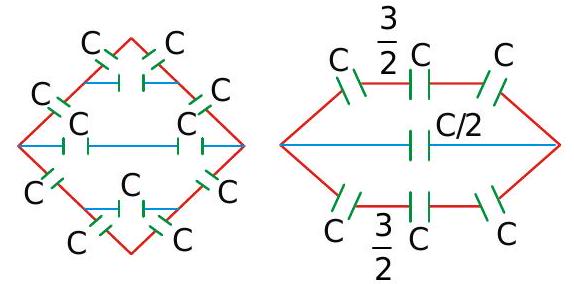268077 A highly conducting sheet ofaluminium foil of negligible thickness is placed between the plates of a parallel plate capacitor. The foil is parallel to the plates. If the capacitance before the insertion of foil was \(10 \mu \mathrm{F}\), its value after the insertion of foil will be
268077 A highly conducting sheet ofaluminium foil of negligible thickness is placed between the plates of a parallel plate capacitor. The foil is parallel to the plates. If the capacitance before the insertion of foil was \(10 \mu \mathrm{F}\), its value after the insertion of foil will be
268077 A highly conducting sheet ofaluminium foil of negligible thickness is placed between the plates of a parallel plate capacitor. The foil is parallel to the plates. If the capacitance before the insertion of foil was \(10 \mu \mathrm{F}\), its value after the insertion of foil will be
268077 A highly conducting sheet ofaluminium foil of negligible thickness is placed between the plates of a parallel plate capacitor. The foil is parallel to the plates. If the capacitance before the insertion of foil was \(10 \mu \mathrm{F}\), its value after the insertion of foil will be
268077 A highly conducting sheet ofaluminium foil of negligible thickness is placed between the plates of a parallel plate capacitor. The foil is parallel to the plates. If the capacitance before the insertion of foil was \(10 \mu \mathrm{F}\), its value after the insertion of foil will be


